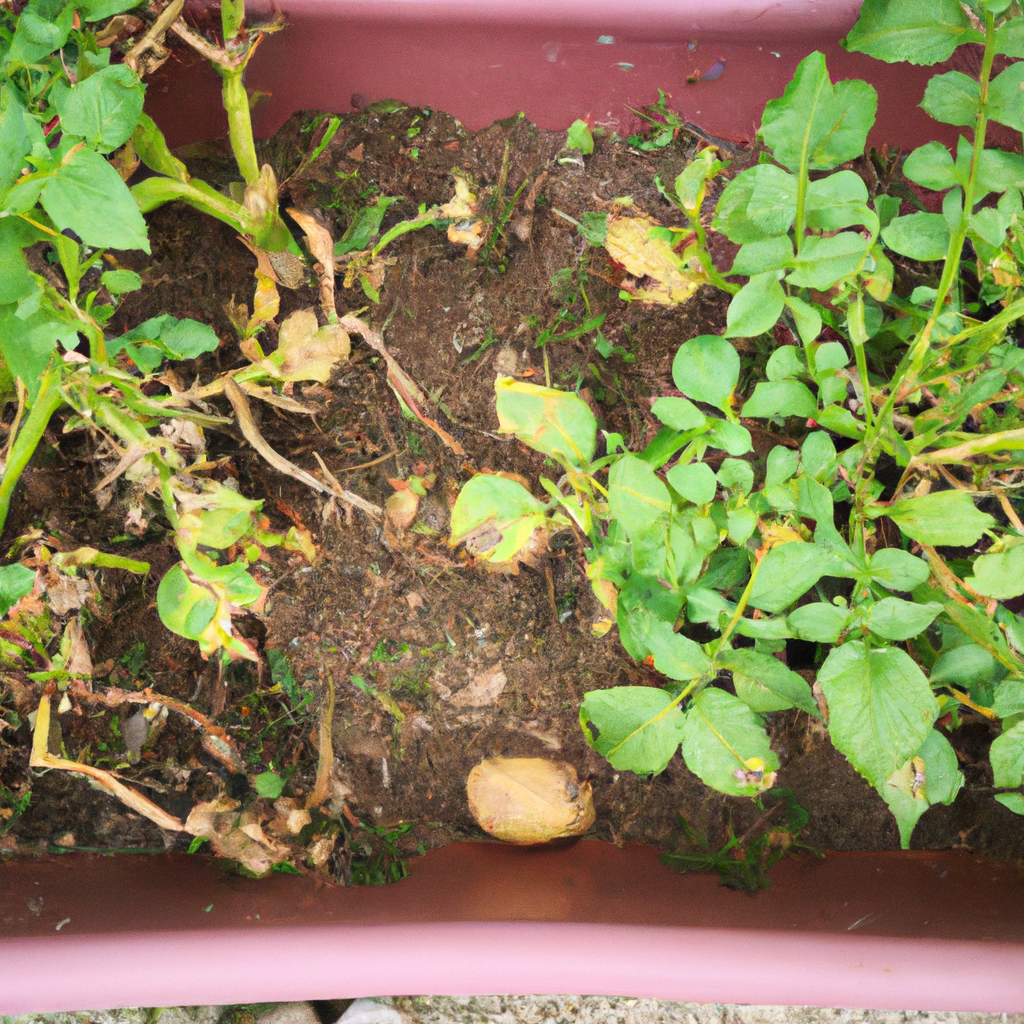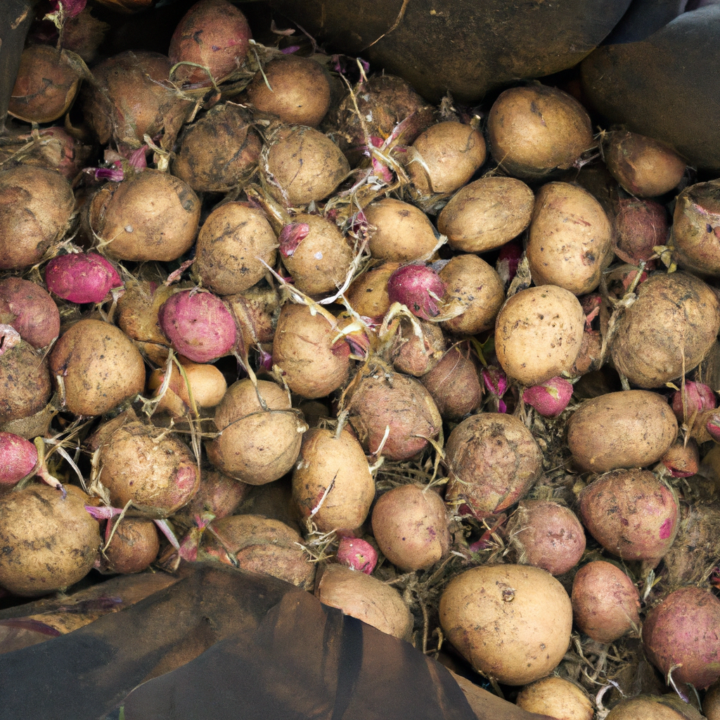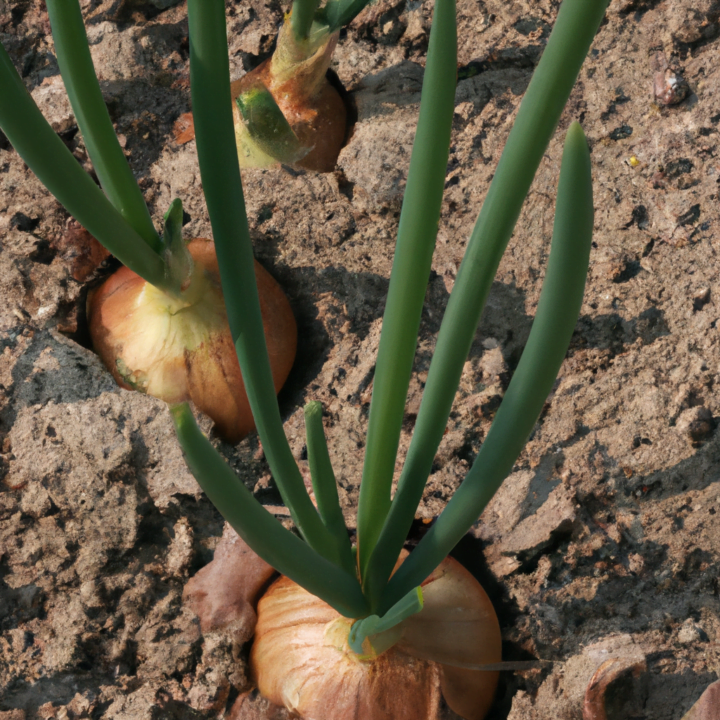Grow Potatoes in Containers: Small-Space Potato Cultivation Made Easy

Learn how to grow potatoes in containers, dream of enjoying the taste of fresh, homegrown potatoes, but lack the space for a traditional garden? If so, container gardening might be the perfect solution for you. Cultivating potatoes in confined spaces, such as containers, pots, or small plots, allows urban gardeners and those with limited space to experience the joy of growing their own potatoes.
In this article, we will explore the various methods and techniques for successful potato cultivation in small areas, providing you with valuable insights and tips to maximize your yields and enjoy a bountiful harvest.
Why Choose Container Gardening for Potatoes?
Table Of Contents
- Why Choose Container Gardening for Potatoes?
- Selecting the Right Containers
- Best Potato Varieties for Confined Spaces
- The Importance of Soil and Fertilization
- Watering Techniques for Container Potato Farming
- Maximizing Yields in Limited Potato Planting Areas
- Managing Pests and Diseases in Confined Potato Gardens
- Harvesting and Storing Potatoes in Small Plots
- Troubleshooting Common Potato Cultivation Problems
- Frequently Asked Questions (FAQs) – Growing Potatoes in Containers
Container gardening offers numerous advantages for growing potatoes in restricted spaces. It allows you to take advantage of unused areas such as patios, balconies, or even small backyard spaces. By using containers, you can provide the ideal growing conditions for potatoes, including the right soil, drainage, and sun exposure. Additionally, container gardening offers better control over potential pests and diseases, making it an attractive option for urban gardeners.
Selecting the Right Containers
When it comes to growing potatoes in containers, choosing the right type of container is crucial for the success of your plants. While potatoes can be grown in a variety of containers, there are a few key factors to consider. First, make sure your chosen container has sufficient depth to accommodate the growth of potato tubers. A container with a depth of at least 12 inches is recommended. Additionally, containers should have adequate drainage holes to prevent waterlogging, which can lead to root rot.
Best Potato Varieties for Confined Spaces
Not all potato varieties are well-suited for growing in containers or small plots. Some varieties naturally produce smaller plants and tubers, making them ideal for limited space gardening. Popular choices include Yukon Gold, Red Pontiac, and French Fingerling potatoes. These varieties are known for their compact growth habits and great taste. Be sure to select potato varieties that are well-adapted to your growing zone and choose certified disease-resistant varieties whenever possible to prevent common potato diseases.
The Importance of Soil and Fertilization
Proper soil preparation and regular fertilization are essential for healthy potato growth and optimal yields. Start by selecting a well-draining potting mix or a combination of garden soil, compost, and sand. Avoid using heavy clay soils, as they can lead to water retention issues. Prior to planting, enrich the soil with organic matter such as compost or well-rotted manure to improve its fertility and structure. Throughout the growing season, provide your potato plants with balanced fertilizer or organic amendments to ensure they receive the necessary nutrients for vigorous growth.
Watering Techniques for Container Potato Farming
Watering is a critical aspect of potato cultivation, especially when growing in containers. Proper watering practices can help prevent common issues such as drought stress or waterlogging. It is important to keep the soil consistently moist but not waterlogged. Water your potato plants deeply and at regular intervals, allowing the top few inches of soil to dry out before the next watering. Avoid overwatering, as it can lead to root rot and other diseases. Mulching can also help retain soil moisture and reduce the frequency of watering, especially during hot summer months.
Maximizing Yields in Limited Potato Planting Areas
When growing potatoes in small spaces, maximizing yields becomes even more crucial. To optimize your harvest, consider implementing a few key strategies.
One effective technique is vertical potato growing, which involves stacking multiple containers or using specialized vertical gardening systems. This allows you to make the most of limited space by growing potatoes upwards. Additionally, companion planting with herbs such as basil or marigold can help deter pests and improve overall plant health, leading to higher yields.
Managing Pests and Diseases in Confined Potato Gardens
While container gardening generally reduces the risk of pests and diseases, it is still important to be vigilant and take appropriate measures to protect your potato plants. Monitor your plants regularly for common pests such as aphids, Colorado potato beetles, or potato tuberworms. Implement cultural practices, such as crop rotation, to minimize the risk of diseases like early blight or late blight.
If necessary, use organic pest control methods or natural predators to keep pest populations in check. Maintaining proper air circulation and removing diseased foliage also helps prevent the spread of diseases.
Harvesting and Storing Potatoes in Small Plots
One of the most rewarding moments in potato cultivation is the harvest. When growing potatoes in small areas, timing is key. Harvest your potatoes when the foliage has withered and turned yellow, typically around 2-3 weeks after the plants have finished flowering. Gently dig up the tubers using a garden fork or your hands, being careful not to damage them. Allow the potatoes to dry in a cool, dark place for a few hours before storing them in a cool, dry, and well-ventilated area. Proper storage conditions will help prolong their shelf life and maintain their quality.
Troubleshooting Common Potato Cultivation Problems
Despite your best efforts, you may encounter some challenges while growing potatoes in containers or small plots. Common issues include nutrient deficiencies, pest damage, or fungal diseases.
Stay proactive by regularly inspecting your plants, keeping them well-fertilized, and promptly addressing any signs of trouble. If needed, consult local gardening resources or seek advice from experienced gardeners in your area. Learning from and sharing experiences with fellow gardeners can help you navigate and overcome any obstacles you may encounter. In conclusion, potato cultivation in confined spaces can be a rewarding and enjoyable experience for urban gardeners with limited space.
By utilizing container gardening techniques, selecting appropriate varieties, and implementing proper soil, fertilization, and watering practices, you can maximize your potato yields and enjoy a delicious harvest. Stay vigilant against pests and diseases, and troubleshoot problems as they arise. With a little planning and care, you can successfully grow potatoes in containers and transform your small space into a thriving potato garden. Happy potato gardening!
Frequently Asked Questions (FAQs) – Growing Potatoes in Containers
1. Can I grow potatoes in containers?
Yes, absolutely! Growing potatoes in containers is a great way to cultivate them in small spaces such as balconies, patios, or even indoors. It allows urban gardeners and those with limited areas to enjoy a fresh potato harvest.
2. What are the advantages of growing potatoes in containers?
There are several advantages to growing potatoes in containers. Firstly, it maximizes yield in limited areas. Secondly, it allows better control over soil quality, nutrients, water, and sunlight exposure. Additionally, container gardening minimizes the risk of soil-borne diseases and makes it easier to manage pests.
3. What containers are suitable for growing potatoes?
A variety of containers can be used for growing potatoes, including buckets, pots, grow bags, wooden crates, or even special potato bags available in the market. It is important to choose containers that are at least 12-16 inches deep to accommodate the potato plants’ root system.
4. What potato varieties are best for container growing?
Some potato varieties are more suitable for container growing due to their compact growth habit. Examples include Yukon Gold, Red Norland, French Fingerling, and All Blue. These varieties typically produce smaller tubers but are well-suited for confined spaces.
5. How do I plant potatoes in containers?
To plant potatoes in containers, start by filling the container with well-draining potting soil. Place seed potatoes (cut into pieces with at least two eyes) about 4-6 inches deep in the soil. Space them a few inches apart. As the plants grow, continue to add soil to cover the lower stems, leaving a few inches of foliage above the soil level.
6. How often should I water container-grown potatoes?
Container-grown potatoes require regular watering to keep the soil evenly moist. Generally, you should water them whenever the top inch of soil feels dry. However, avoid overwatering, as it can lead to waterlogged roots and rotting tubers.
7. How can I prevent pests and diseases in container potato gardens?
To prevent pests, regularly inspect your plants for signs of infestation, and consider using organic pest control methods such as neem oil or insecticidal soaps. Disease prevention can be achieved by using disease-resistant potato varieties, implementing crop rotation, and maintaining good airflow around the plants.
8. When can I harvest potatoes grown in containers?
The time to harvest potatoes will depend on the variety you are growing. Most early varieties can be harvested within 75-90 days, while main crop varieties may take up to 120 days. Start harvesting when the plants have flowered and the foliage starts to yellow and die back. Gently dig around the edges of the container to harvest the desired number of potatoes.
9. Can I reuse the soil from container-grown potatoes?
Yes, you can reuse the soil from container-grown potatoes, but it is important to replenish it with compost or organic matter before planting potatoes again. This helps maintain soil fertility and ensures the availability of essential nutrients.
10. How can I store the harvested potatoes?
After harvesting, allow the potatoes to dry and cure in a cool, dark, and well-ventilated area for a few days. Then, store them in a cool (around 40°F/4°C) and dark place to prevent sprouting and extend their shelf life. Avoid storing potatoes near onions or other fruits and vegetables that produce ethylene gas, as it can cause potatoes to spoil faster.

